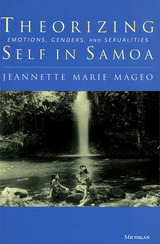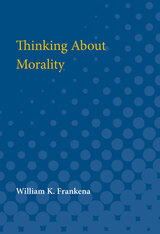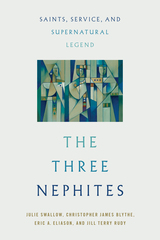3 books about Binzel, Richard P.
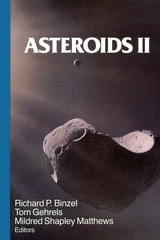
Asteroids II
Richard P. Binzel
University of Arizona Press, 1989
This sourcebook brought together our knowledge about asteroids, based on a gather during the week of March 8-11, 1988 with move than 160 scientists from 14 countries who gathered in Tucson for the Asteroids II conference.
Asteroids II is not a sequel, per se, to the 1979 book Asteroids. It offered a fresh treatment intended to stand on its own as a complete description of the current understanding of the field. It was published in December 1989. The work showcased a large international collaboration, a sign of an active and growing discipline.
Asteroids II is not a sequel, per se, to the 1979 book Asteroids. It offered a fresh treatment intended to stand on its own as a complete description of the current understanding of the field. It was published in December 1989. The work showcased a large international collaboration, a sign of an active and growing discipline.
[more]
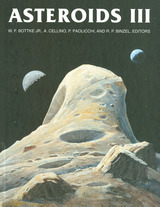
Asteroids III
Edited by W. F. Bottke Jr., A. Cellino, P. Paolicchi, and R. P. Binzel
University of Arizona Press, 2002
Two hundred years after the first asteroid was discovered, asteroids can no longer be considered mere points of light in the sky. Spacecraft missions, advanced Earth-based observation techniques, and state-of-the-art numerical models are continually revealing the detailed shapes, structures, geological properties, and orbital characteristics of these smaller denizens of our solar system. This volume brings together the latest information obtained by spacecraft combined with astronomical observations and theoretical modeling, to present our best current understanding of asteroids and the clues they reveal for the origin an,d evolution of the solar system.
This collective knowledge, prepared by a team of more than one hundred international authorities on asteroids, includes new insights into asteroid-meteorite connections, possible relationships with comets, and the hazards posed by asteroids colliding with Earth. The book's contents include reports on surveys based on remote observation and summaries of physical properties; results of in situ exploration; studies of dynamical, collisional, cosmochemical, and weathering evolutionary processes; and discussions of asteroid families and the relationships between asteroids and other solar system bodies. Two previous Space Science Series volumes have established standards for research into asteroids. Asteroids III carries that tradition forward in a book that will stand as the definitive source on its subject for the next decade.
This collective knowledge, prepared by a team of more than one hundred international authorities on asteroids, includes new insights into asteroid-meteorite connections, possible relationships with comets, and the hazards posed by asteroids colliding with Earth. The book's contents include reports on surveys based on remote observation and summaries of physical properties; results of in situ exploration; studies of dynamical, collisional, cosmochemical, and weathering evolutionary processes; and discussions of asteroid families and the relationships between asteroids and other solar system bodies. Two previous Space Science Series volumes have established standards for research into asteroids. Asteroids III carries that tradition forward in a book that will stand as the definitive source on its subject for the next decade.
[more]
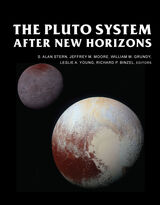
The Pluto System After New Horizons
S. Alan Stern, Jeffrey M. Moore, William M. Grundy, Leslie A. Young, Richard P. Binzel, Editors
University of Arizona Press, 2021
Once perceived as distant, cold, dark, and seemingly unknowable, Pluto had long been marked as the farthest and most unreachable frontier for solar system exploration. After Voyager accomplished its final planetary reconnaissance at Neptune in 1989, Pluto and its cohort in the Kuiper Belt beckoned as the missing puzzle piece for completing the first reconnaissance of our solar system. In the decades following Voyager, a mission to the Pluto system was not only imagined but also achieved, culminating with the historic 2015 flyby by the New Horizons spacecraft. Pluto and its satellite system (“the Pluto system”), including its largest moon, Charon, have been revealed to be worlds of enormous complexity that fantastically exceed preconceptions.
The Pluto System After New Horizons seeks to become the benchmark for synthesizing our understanding of the Pluto system. The volume’s lead editor is S. Alan Stern, who also serves as NASA’s New Horizons Principal Investigator; co-editors Richard P. Binzel, William M. Grundy, Jeffrey M. Moore, and Leslie A. Young are all co-investigators on New Horizons. Leading researchers from around the globe have spent the last five years assimilating Pluto system flyby data returned from New Horizons. The chapters in this volume form an enduring foundation for ongoing study and understanding of the Pluto system. The volume also advances insights into the nature of dwarf planets and Kuiper Belt objects, providing a cornerstone for planning new missions that may return to the Pluto system and explore others of the myriad important worlds beyond Neptune.
The Pluto System After New Horizons seeks to become the benchmark for synthesizing our understanding of the Pluto system. The volume’s lead editor is S. Alan Stern, who also serves as NASA’s New Horizons Principal Investigator; co-editors Richard P. Binzel, William M. Grundy, Jeffrey M. Moore, and Leslie A. Young are all co-investigators on New Horizons. Leading researchers from around the globe have spent the last five years assimilating Pluto system flyby data returned from New Horizons. The chapters in this volume form an enduring foundation for ongoing study and understanding of the Pluto system. The volume also advances insights into the nature of dwarf planets and Kuiper Belt objects, providing a cornerstone for planning new missions that may return to the Pluto system and explore others of the myriad important worlds beyond Neptune.
[more]
READERS
Browse our collection.
PUBLISHERS
See BiblioVault's publisher services.
STUDENT SERVICES
Files for college accessibility offices.
UChicago Accessibility Resources
home | accessibility | search | about | contact us
BiblioVault ® 2001 - 2025
The University of Chicago Press



